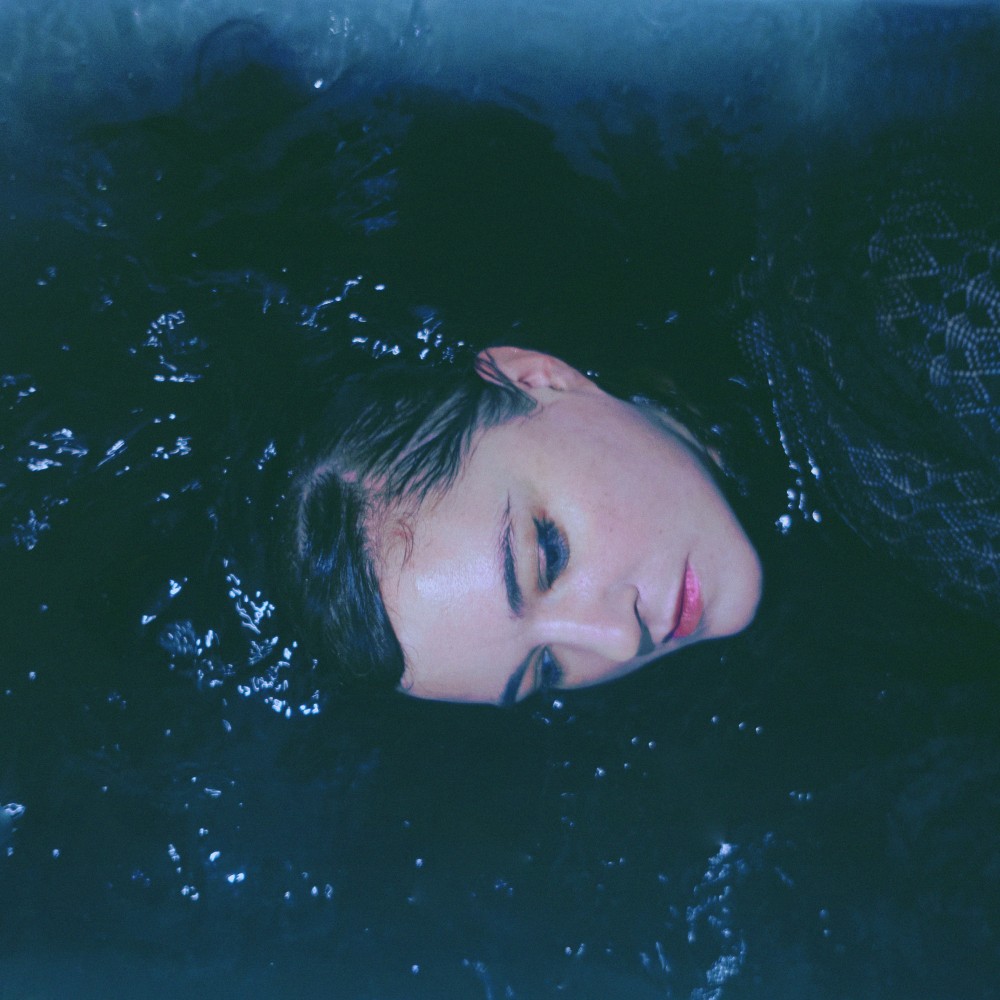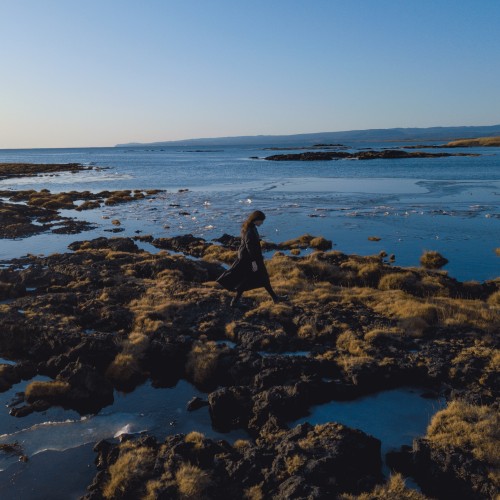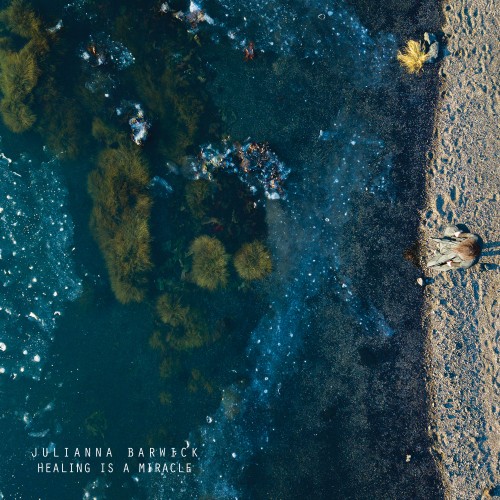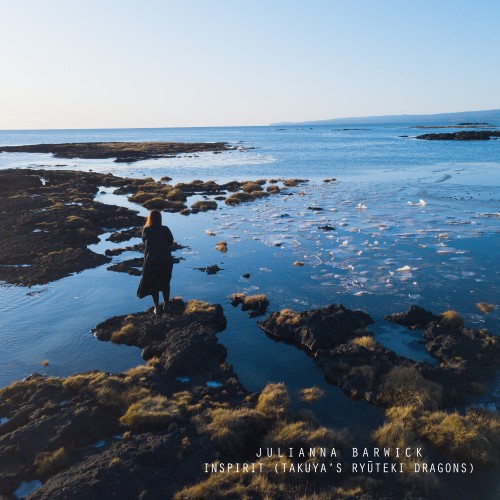
Julianna Barwick
On Ninja Tune
BIOGRAPHY
Julianna Barwick is a composer, vocalist and producer who makes deep, reflective compositions out of the human voice. Her fourth album, “Healing Is A Miracle”, released July 10th 2020 on her new home Ninja Tune, is a distinctive meditation on sound, reverb and the voice. Built out from her instinctive, improvisational approach and a close affinity to a couple of trusted items of gear, she spins engrossing, expansive universes out of a single idea. She also draws on the...
Julianna Barwick is a composer, vocalist and producer who makes deep, reflective compositions out of the human voice. Her fourth album, “Healing Is A Miracle”, released July 10th 2020 on her new home Ninja Tune, is a distinctive meditation on sound, reverb and the voice. Built out from her instinctive, improvisational approach and a close affinity to a couple of trusted items of gear, she spins engrossing, expansive universes out of a single idea. She also draws on the input of three collaborators with whom she’s held long-standing friendships: Jónsi (Sigur Rós), Nosaj Thing and Mary Lattimore, who each gently nudge out at the edges of Barwick’s organically-evolved sound.
Growing up in Louisiana, in the American south, church choirs were one of Barwick’s earliest musical influences. Her family went to church three times a week, where the experience of hearing hers and other voices reverberate inside the church walls made a lifelong impression. From an early age, she would try to harmonise with voices or music she heard day to day, and would seek out spaces which were conducive to satisfying sounding reverb. Her first listening experiences came from the radio and TV. Pop records by Whitney Houston and Lionel Richie, along with film scores by John Williams and John Barry, were some of the first music that grabbed her interest. Later, Björk’s “Debut”, bought on a whim at the mall, would open up new horizons, soon followed by Tori Amos, artists that both shaped her musical perspective for a long time afterwards.
The key to unlocking her own music was a guitar pedal lent by a friend, in 2005, which had a loop function. By this point, she had moved to New York, where she had experimented with four-track cassettes and with the guitar, playing at gatherings with friends, and at DIY shows she helped to organise at venues around Brooklyn. It was the pedal, however, that offered the tool to use her voice in ways she hadn’t thought of before. “Everything clicked in that moment,” she says. “That was where everything that I do now really originated.”
The results from those first experiments were what made it onto her 2007 debut “Sanguine”, self-released with help from a friend, who helped her navigate the technicalities of releasing an album. From there, a connection through Myspace saw her get invited to Lisbon and London. She made a gamble on the trip, scraping together the money to make the journey from New York. It paid off: she performed several shows in each city, recorded a live session in Lisbon that was featured on Pitchfork, performed on national Portugese radio, was invited to support Dirty Projectors in London, with whom she has stayed friendly with since.
Her 2011 follow-up, “The Magic Place”, which she describes as her “search for the perfect reverb”, also came about through a Myspace connection, this time to Helado Negro. He invited her to open for a show at Brooklyn venue the Knitting Factory, and he showed her music to his then label Asthmatic Kitty (co-founded by Sufjan Stevens), who signed her to release the record.
“Nepenthe”, released in 2013, marked Barwick’s first steps into collaborating. She worked with Alex Somers, producer for Sigur Rós who invited her to Reykjavík for two blocks of recording sessions—as a longstanding Sigur Rós fan she was enticed, aside from anything else, to work in the same studio as the celebrated group—with her and Somers striking up a close friendship over the following years, and beginning a long-standing affinity with Iceland and the people she connected with there.
She expanded her parameters further on “Will”, her 2016 album. Enlisting more collaborators in Mas Ysa's Thomas Arsenault, Dutch cellist Maarten Vos and Chairlift percussionist Jamie Ingalls, Róbert Sturla Reynisson (from the group Múm) and string quartet Amiina, the album also features a wider range of sounds and instruments–including drums–than she’d worked with previously. The record was met with widespread acclaim from the likes of Pitchfork, NPR, the New York Times, The Guardian, Resident Advisor, Crack Magazine and many more.
In the four years since releasing “Will”, she’s continued to tour the US and worldwide, including with the likes of Explosions in the Sky, Angel Olsen, and Perfume Genius. She also released a collaborative single with Rafael Anton Irisarri, on the super-limited Thesis label, and the “Command Synthesis” EP, on RVNG Intl. sub-label Commend There, in which she employed AI to build five tracks that responded to the airborne environment outside a hotel room.
Barwick has also been involved in a series of head-turning live collaborations over the years. In 2015, she was invited to perform at a show with The Flaming Lips, performing music from their reimagining of “Sergeant Pepper's Lonely Hearts Club Band”, at New York’s esteemed Carnegie Hall, onstage alongside Phillip Glass, Debbie Harry, Laurie Anderson and Patti Smith. That same year she was invited to play at two shows with Yoko Ono, one in Central Park and one at MoMA, the latter she describes as “my most favourite thing I’ve ever done.”
Recorded in the wake of a seismic shift in her life following a move from New York—where she had lived for 16 years—to Los Angeles where she is now based, “Healing Is A Miracle” is both a product of her new surroundings and also the result of a small but significant switch up to her recording process: the addition of some studio monitors—a birthday gift from Jónsi and Alex (Somers)—having previously recorded all of her music on headphones. “The first song I remember making with those was the first song on the album, Inspirit.” she explains, “When I added the bass I really felt it in my body, you know, in a way you just wouldn’t with headphones… it was kind of euphoric and fun. I got really excited about making the record in that moment, and I think that really had an impact on the sounds I ended up making.”
The title came to her after thinking about how the human body heals itself, of the miraculous processes we pay little attention to: “You cut your hand, it looks pretty bad, and two weeks later it looks like it never happened… That’s kind of amazing, you know?” From there, she conceived of the record’s simple statement title, ran it past a couple of friends, and it was settled. Like with the record itself, and all of her work, it’s about following her gut, and seeing where it takes her.
She also enlisted the talents of what she describes as three “dream collaborators” on this record. She was first introduced to Jónsi through Alex Somers during one of her early visits to Reykjavik, and–as a long-time Sigur Rós fan–she was thrilled to have him feature. “I think he has the best voice in the world,” she says, “and hearing my voice with Jonsi's is one of the joys of my life.” Nosaj Thing—the highly respected electronic producer and stalwart of the LA scene—had gotten in touch to express his affection for her 2011 album “The Magic Place”, and they’d since been trying to find a way to work together. Barwick and Lattimore had struck up a friendship over many years performing live together, and had moved to LA around the same time. Finding herself in the same city as all three for the first time, it felt natural to include them in her process, and added to the feeling of newness, support and friendship she had while producing the record.
As always, the sound of Barwick’s voice is the record’s anchor. It’s her layering and modulating of it that creates the distinctive, all-enveloping atmosphere she’s become renowned for. From the sparse, entrancing opener ‘Inspirit’, to ‘Safe’, a prime example of the transcendent feeling created through the organic interplay between her layered vocal loops. She continues to explore different ways to build on that foundation, on ‘In Light’, for instance, her collaboration with Jónsi, she adopts a song-like, chorus structure for the first time, Jónsi’s influence felt in the bombast that drives the tracks most enlivened moments. Elsewhere, it’s in the small, repeated piano melody in “Nod” that the track is softly elevated to a higher plane, and in the title track, where mournful strings counterbalance her delicate vocals.
“Healing Is A Miracle” presents another distinct chapter for Julianna Barwick, distilling new elements into her carefully crafted sound, the result of her own ever-evolving process and her considered use of collaborations.
Forthcoming Events
| February 2026 | ||
| 14th February 2026 |
Julianna Barwick
Sid the Cat Auditorium Los Angeles, US |
|
| 15th February 2026 |
Julianna Barwick
Great American Music Hall SF Bay Area, US |
|
| 17th February 2026 |
Julianna Barwick
The Crocodile - Old Location Seattle, US |
|
| 20th February 2026 |
Julianna Barwick
The Crepe Place SF Bay Area, US |
|
| 21st February 2026 |
Julianna Barwick
Ojai Playhouse Ojai, US |
|
| March 2026 | ||
| 12th March 2026 |
Julianna Barwick
Thalia Hall Chicago, US |
|
| 17th March 2026 |
Julianna Barwick
The Great Hall Toronto, Canada |
|
| 19th March 2026 |
Julianna Barwick
Center for Arts at the Armory Boston / Cambridge, US |
|
| 20th March 2026 |
Julianna Barwick
First Unitarian Church Philadelphia, US |
|
| April 2026 | ||
| 11th April 2026 |
Julianna Barwick
EartH London, UK |
|
| 16th April 2026 |
Julianna Barwick
Blå Oslo, Norway |
|
| 19th April 2026 |
Julianna Barwick
Kuppelhalle@silent Green Berlin, Germany |
|
| 21st April 2026 |
Julianna Barwick
Bad Bonn Dudingen, Switzerland |
|
Julianna Barwick
On Ninja Tune
Latest News
BIOGRAPHY
Julianna Barwick is a composer, vocalist and producer who makes deep, reflective compositions out of the human voice. Her fourth album, “Healing Is A Miracle”, released July 10th 2020 on her new home Ninja Tune, is a distinctive meditation on sound, reverb and the voice. Built out from her instinctive, improvisational approach and a close affinity to a couple of trusted items of gear, she spins engrossing, expansive universes out of a single idea. She also draws on the input of three coll...
Julianna Barwick is a composer, vocalist and producer who makes deep, reflective compositions out of the human voice. Her fourth album, “Healing Is A Miracle”, released July 10th 2020 on her new home Ninja Tune, is a distinctive meditation on sound, reverb and the voice. Built out from her instinctive, improvisational approach and a close affinity to a couple of trusted items of gear, she spins engrossing, expansive universes out of a single idea. She also draws on the input of three collaborators with whom she’s held long-standing friendships: Jónsi (Sigur Rós), Nosaj Thing and Mary Lattimore, who each gently nudge out at the edges of Barwick’s organically-evolved sound.
Growing up in Louisiana, in the American south, church choirs were one of Barwick’s earliest musical influences. Her family went to church three times a week, where the experience of hearing hers and other voices reverberate inside the church walls made a lifelong impression. From an early age, she would try to harmonise with voices or music she heard day to day, and would seek out spaces which were conducive to satisfying sounding reverb. Her first listening experiences came from the radio and TV. Pop records by Whitney Houston and Lionel Richie, along with film scores by John Williams and John Barry, were some of the first music that grabbed her interest. Later, Björk’s “Debut”, bought on a whim at the mall, would open up new horizons, soon followed by Tori Amos, artists that both shaped her musical perspective for a long time afterwards.
The key to unlocking her own music was a guitar pedal lent by a friend, in 2005, which had a loop function. By this point, she had moved to New York, where she had experimented with four-track cassettes and with the guitar, playing at gatherings with friends, and at DIY shows she helped to organise at venues around Brooklyn. It was the pedal, however, that offered the tool to use her voice in ways she hadn’t thought of before. “Everything clicked in that moment,” she says. “That was where everything that I do now really originated.”
The results from those first experiments were what made it onto her 2007 debut “Sanguine”, self-released with help from a friend, who helped her navigate the technicalities of releasing an album. From there, a connection through Myspace saw her get invited to Lisbon and London. She made a gamble on the trip, scraping together the money to make the journey from New York. It paid off: she performed several shows in each city, recorded a live session in Lisbon that was featured on Pitchfork, performed on national Portugese radio, was invited to support Dirty Projectors in London, with whom she has stayed friendly with since.
Her 2011 follow-up, “The Magic Place”, which she describes as her “search for the perfect reverb”, also came about through a Myspace connection, this time to Helado Negro. He invited her to open for a show at Brooklyn venue the Knitting Factory, and he showed her music to his then label Asthmatic Kitty (co-founded by Sufjan Stevens), who signed her to release the record.
“Nepenthe”, released in 2013, marked Barwick’s first steps into collaborating. She worked with Alex Somers, producer for Sigur Rós who invited her to Reykjavík for two blocks of recording sessions—as a longstanding Sigur Rós fan she was enticed, aside from anything else, to work in the same studio as the celebrated group—with her and Somers striking up a close friendship over the following years, and beginning a long-standing affinity with Iceland and the people she connected with there.
She expanded her parameters further on “Will”, her 2016 album. Enlisting more collaborators in Mas Ysa's Thomas Arsenault, Dutch cellist Maarten Vos and Chairlift percussionist Jamie Ingalls, Róbert Sturla Reynisson (from the group Múm) and string quartet Amiina, the album also features a wider range of sounds and instruments–including drums–than she’d worked with previously. The record was met with widespread acclaim from the likes of Pitchfork, NPR, the New York Times, The Guardian, Resident Advisor, Crack Magazine and many more.
In the four years since releasing “Will”, she’s continued to tour the US and worldwide, including with the likes of Explosions in the Sky, Angel Olsen, and Perfume Genius. She also released a collaborative single with Rafael Anton Irisarri, on the super-limited Thesis label, and the “Command Synthesis” EP, on RVNG Intl. sub-label Commend There, in which she employed AI to build five tracks that responded to the airborne environment outside a hotel room.
Barwick has also been involved in a series of head-turning live collaborations over the years. In 2015, she was invited to perform at a show with The Flaming Lips, performing music from their reimagining of “Sergeant Pepper's Lonely Hearts Club Band”, at New York’s esteemed Carnegie Hall, onstage alongside Phillip Glass, Debbie Harry, Laurie Anderson and Patti Smith. That same year she was invited to play at two shows with Yoko Ono, one in Central Park and one at MoMA, the latter she describes as “my most favourite thing I’ve ever done.”
Recorded in the wake of a seismic shift in her life following a move from New York—where she had lived for 16 years—to Los Angeles where she is now based, “Healing Is A Miracle” is both a product of her new surroundings and also the result of a small but significant switch up to her recording process: the addition of some studio monitors—a birthday gift from Jónsi and Alex (Somers)—having previously recorded all of her music on headphones. “The first song I remember making with those was the first song on the album, Inspirit.” she explains, “When I added the bass I really felt it in my body, you know, in a way you just wouldn’t with headphones… it was kind of euphoric and fun. I got really excited about making the record in that moment, and I think that really had an impact on the sounds I ended up making.”
The title came to her after thinking about how the human body heals itself, of the miraculous processes we pay little attention to: “You cut your hand, it looks pretty bad, and two weeks later it looks like it never happened… That’s kind of amazing, you know?” From there, she conceived of the record’s simple statement title, ran it past a couple of friends, and it was settled. Like with the record itself, and all of her work, it’s about following her gut, and seeing where it takes her.
She also enlisted the talents of what she describes as three “dream collaborators” on this record. She was first introduced to Jónsi through Alex Somers during one of her early visits to Reykjavik, and–as a long-time Sigur Rós fan–she was thrilled to have him feature. “I think he has the best voice in the world,” she says, “and hearing my voice with Jonsi's is one of the joys of my life.” Nosaj Thing—the highly respected electronic producer and stalwart of the LA scene—had gotten in touch to express his affection for her 2011 album “The Magic Place”, and they’d since been trying to find a way to work together. Barwick and Lattimore had struck up a friendship over many years performing live together, and had moved to LA around the same time. Finding herself in the same city as all three for the first time, it felt natural to include them in her process, and added to the feeling of newness, support and friendship she had while producing the record.
As always, the sound of Barwick’s voice is the record’s anchor. It’s her layering and modulating of it that creates the distinctive, all-enveloping atmosphere she’s become renowned for. From the sparse, entrancing opener ‘Inspirit’, to ‘Safe’, a prime example of the transcendent feeling created through the organic interplay between her layered vocal loops. She continues to explore different ways to build on that foundation, on ‘In Light’, for instance, her collaboration with Jónsi, she adopts a song-like, chorus structure for the first time, Jónsi’s influence felt in the bombast that drives the tracks most enlivened moments. Elsewhere, it’s in the small, repeated piano melody in “Nod” that the track is softly elevated to a higher plane, and in the title track, where mournful strings counterbalance her delicate vocals.
“Healing Is A Miracle” presents another distinct chapter for Julianna Barwick, distilling new elements into her carefully crafted sound, the result of her own ever-evolving process and her considered use of collaborations.
Forthcoming Events
| February 2026 | ||
| 14th February 2026 |
Julianna Barwick
Sid the Cat Auditorium Los Angeles, US |
|
| 15th February 2026 |
Julianna Barwick
Great American Music Hall SF Bay Area, US |
|
| 17th February 2026 |
Julianna Barwick
The Crocodile - Old Location Seattle, US |
|
| 20th February 2026 |
Julianna Barwick
The Crepe Place SF Bay Area, US |
|
| 21st February 2026 |
Julianna Barwick
Ojai Playhouse Ojai, US |
|
| March 2026 | ||
| 12th March 2026 |
Julianna Barwick
Thalia Hall Chicago, US |
|
| 17th March 2026 |
Julianna Barwick
The Great Hall Toronto, Canada |
|
| 19th March 2026 |
Julianna Barwick
Center for Arts at the Armory Boston / Cambridge, US |
|
| 20th March 2026 |
Julianna Barwick
First Unitarian Church Philadelphia, US |
|
| April 2026 | ||
| 11th April 2026 |
Julianna Barwick
EartH London, UK |
|
| 16th April 2026 |
Julianna Barwick
Blå Oslo, Norway |
|
| 19th April 2026 |
Julianna Barwick
Kuppelhalle@silent Green Berlin, Germany |
|
| 21st April 2026 |
Julianna Barwick
Bad Bonn Dudingen, Switzerland |
|



